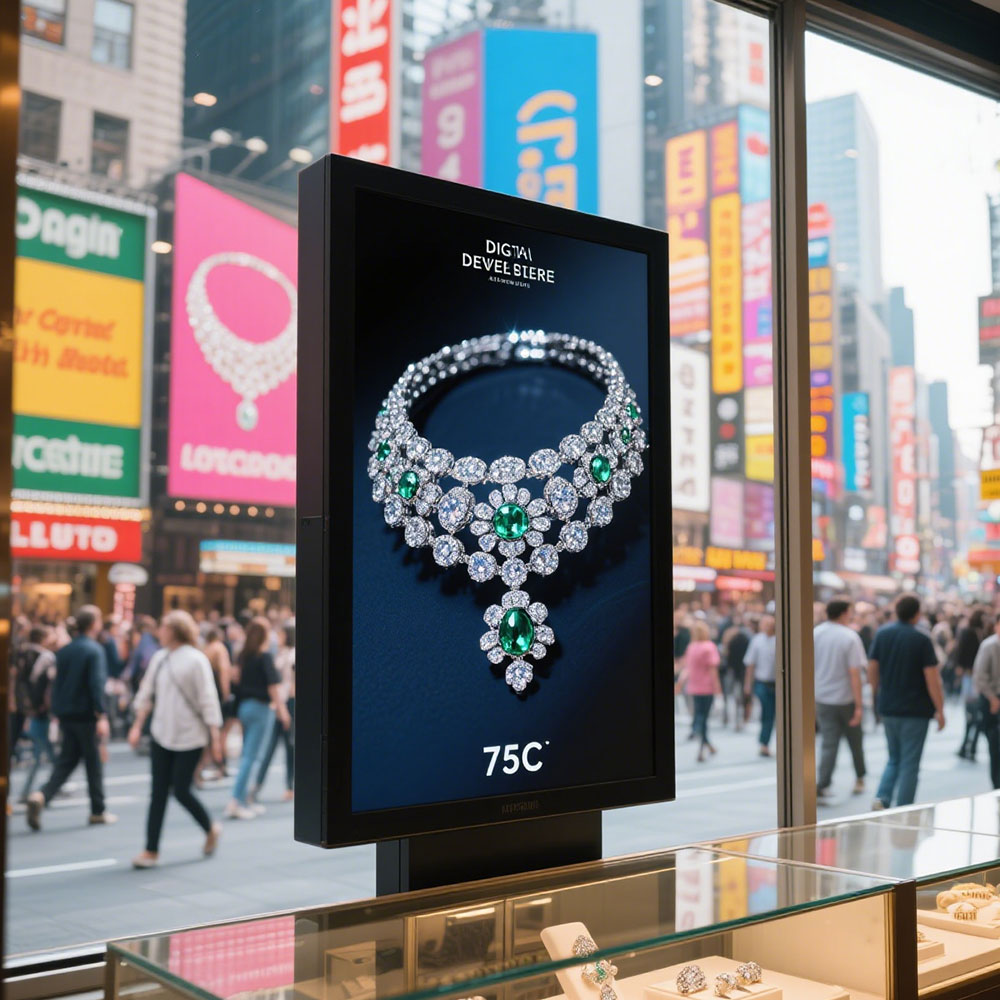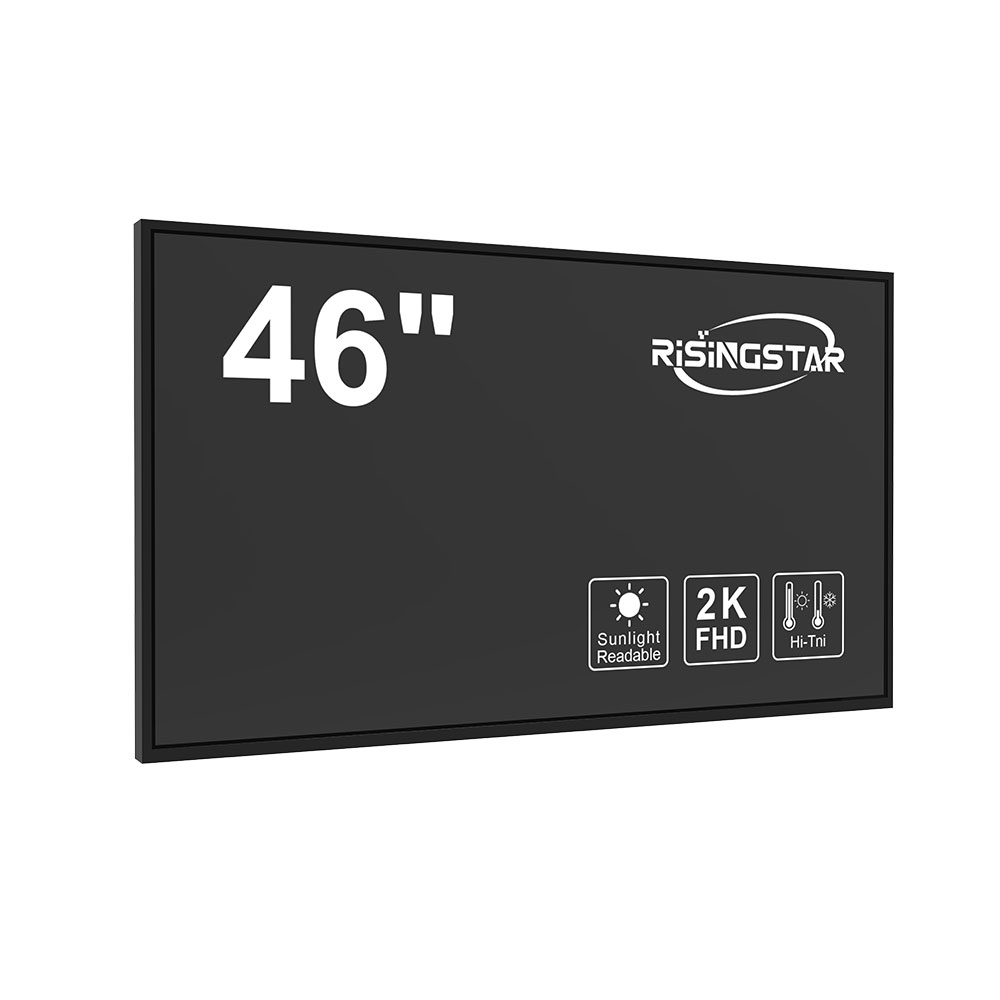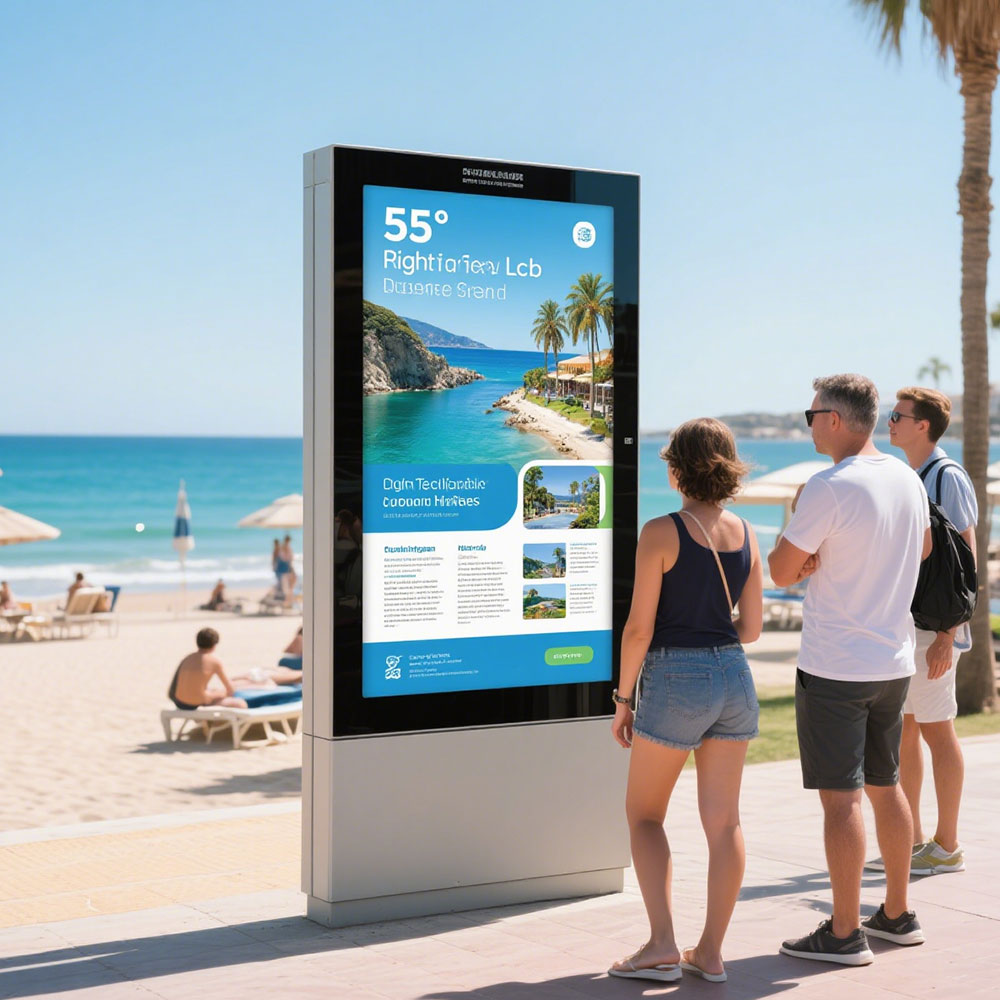Outdoor LCD screens are critical components in modern digital signage, advertising, transportation hubs, and public information systems. With increasing demand for real-time data display in harsh environments—from bright sunlight to extreme temperatures—choosing the right outdoor LCD screen requires technical precision and industry expertise. This article provides a comprehensive guide based on real-world deployment data, international standards (such as IP65/66 for weather resistance and IEC 60068 for environmental testing), and proven installation best practices.
First, brightness is the most critical factor. For full-day visibility under direct sunlight, outdoor LCDs must achieve at least 5,000 nits of peak brightness—a standard now widely adopted in global markets like North America, Europe, and East Asia. Screens with lower brightness levels (e.g., 1,000–3,000 nits) fail dramatically in daylight conditions, reducing readability by over 70% according to studies by the Society for Information Display (SID). High-brightness LED-backlit panels or micro-LED technologies are recommended for permanent installations.

Second, weatherproofing is non-negotiable. The International Protection (IP) rating determines a screen’s resistance to dust and water ingress. An IP65 rating ensures protection against low-pressure water jets, while IP66 offers resistance to powerful water jets—both essential for coastal or high-rainfall areas. In colder climates, screens must also meet IEC 60068-2-1 (cold testing) and IEC 60068-2-14 (condensation resistance) standards. Failure to comply can lead to condensation-induced short circuits or mechanical damage within 6 months of deployment.
Third, thermal management plays a vital role. Outdoor LCDs operate in temperature ranges from -20°C to +60°C. Effective heat dissipation is achieved through passive cooling (heat sinks) or active cooling (fans with sealed enclosures). A case study from a major European transit authority showed that improperly cooled displays failed 3x faster than those with integrated thermal design. Always verify manufacturer claims with third-party thermal reports or field test results.
Fourth, viewing angle and contrast ratio matter for user engagement. Wide viewing angles (≥178°) ensure consistent image quality across multiple positions—an essential feature for bus stops, stadiums, and retail kiosks. Contrast ratios above 5,000:1 maintain clarity even in low-light conditions such as dusk or nighttime.

Finally, consider maintenance and lifespan. Industrial-grade outdoor LCDs typically last 60,000+ hours (over 7 years of continuous operation). Look for screens certified under ISO 9001 for manufacturing consistency and MIL-STD-810G for shock and vibration resistance—especially important in airports or construction sites.

In conclusion, selecting an outdoor LCD screen involves balancing brightness, durability, thermal performance, and long-term reliability. By referencing industry standards, real-world usage data, and proven engineering principles, businesses can make informed decisions that maximize ROI and minimize downtime. Whether deploying in Dubai’s desert heat or Oslo’s winter cold, choosing wisely ensures your message remains visible, clear, and impactful.







